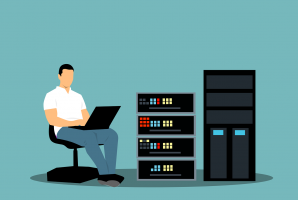The more your Joomla web site gain traffic, greater security you have to maintain. Because hackers are looking for the loop whole to hack any website. So, it is important for you to secure your website from such a threat for a smooth run.
Joomla! is a CMS is incredible and secure, but intermittently, we made it helpless independent from anyone else.
Other than the prevalence, an ever-increasing number of people and organizations of all sizes begin to depend on this open-source CMS and get their products and services through it on the web.
According to stats around 2.5 % of websites are developed using Joomla CMS. The research also mentions that Joomla is the 2nd biggest CMS platform downloaded by people to develop a website.
The trouble makers or hackers may attempt a wide
range of hacking techniques to assault your site or cut down your site. These
range from remote record incorporation to cross-site scripting to the ever-well
known SQL injection.
As an admin of your website, it is your responsibility that your website is free from a spammer and work correctly.
As Joomla development services India, our team of experts examines the accepted procedures to verify a Joomla web site. We should dive into it!
Always use the Latest Version of Joomla and its
Extension
Using an updated version of Joomla keep your website free from different types of bugs and if you not following the update then you are putting yourself in big danger.
Because updates are done to fix the security issues and other things which help in the smooth run of the website.
Make Strong Password for Admin Login
Most of the time people use Admin as there username and password don’t contain a special character. Which make password guessable and easy to break.
If you follow the same process then you are just
inviting hackers to break your website admin panel.
Don’t Upload Your Website with Unwanted
Extensions
As Joomla is open software you will find N number of plugins to use while creating your website.
It’s good to use them, but the awful thing is the
point at which you introduce a low-quality augmentation that will make
imperfections in your site.
This is why unplug the extension which is no use it also affects your website load time which is not good according to SEO.
Always Make A Backup of Your Website
If there should arise an occurrence of, when
things turn out badly, backup is most likely one of the fastest and most ideal
approaches to reestablish your online business tasks.
You should have your website in a stable
facilitating organization like SiteGround, who gives a decent backup plan.
Alongside facilitating backup, you may utilize an augmentation like Akeeba
backup.
Screen your Joomla web Site
If your website goes down or damaged at that
point, how would you know?
Utilize the StatusCake tool which screens your
website and notifies you through the email, slack, or SMS when if the site
isn’t reachable.
This is a free tool, and you can take vital
activities quickly if required.
Utilize Powerful Security Extensions
Utilize an incredible expansion that can battle
against spam, known vulnerabilities, and realized assaults like animal power
assault, SQL Injections.
There are numerous and security extensions
accessible for Joomla in the Joomla extensions catalog. Among them, R Antispam,
Incapsula, and Security Check are ideal and successful ones. You may utilize
one from these.
Execute Two-Factor Authentication
Two-Factor Authentication is an additional
security layer that requires not just a username and password from the client
but likewise requires something that only, and only, that client has on
them.
It will be a snippet of data just the client
should know or have promptly to hand, for example, a physical token or random
generated OTP (One Time Password).
OTP is a six numeric digit code generated by
cryptographic capacities in a short interim. Regardless of whether the program
will get your Joomla administrator username and password, they would even now require
the OTP to signed in the framework.
If you need to empower the Two-Factor
Authentication, it requires Joomla 3.2.0 or higher version.
The means to empower Two-Factor Authentication:
Stage 1: Login to the organization board.
Stage 2: Click on Components >> Post-establishment Messages.
Stage 3: Click on Enable two-factor authentication.
Stage 4: Install a Google Authenticator, compatible customer for your gadget.
Use SSL Certification
Use SSL certificate on your site and power Joomla
into SSL mode.
Before empowering SSL mode, make sure that you
have configured SSL certificate for your site’s space, or you won’t most likely
empower this element.
When you utilize an SSL certificate on your website, it will encode the client’s username and password before sent to your server over the web.
Conclusion
If you pursue these means, the odds to be hacked your Joomla web site is diminished, and your site will be more secure than in the past. Also, you’ll have the option to recover your site rapidly than at any other time if it will be hacked.
Like this:
Like Loading...













 A Complete Guide to PHP – a Scripting language
A Complete Guide to PHP – a Scripting language
This is probably one of those blogs that I had been searching for everywhere. Now that my search is over, thanks to you. It would be better if you keep upgrading your skills and publishing your blogs with more readers.